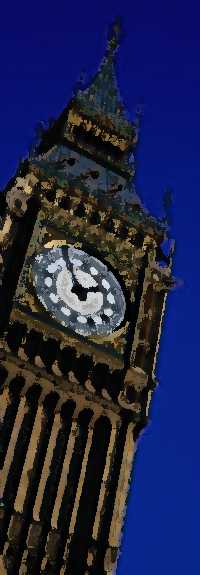|
Basic Biography of Sheikh Zayed bin Sultan Al Nahyan
Sheikh Zayed was born in 1918 and named after his grandfather,
Shaikh Zayed bin Khalifa Al Nahyan, who has the longest reign in the emirate's history, ruling Abu Dhabi from 1855 to 1909.
His grandfather is also known as “Zayid The Great” and “Zayed the First”, and had played a large role
in forging unity between the tribes of Oman and leading the Bani Yas tribe.
Zayed's father, Shiekh Sultan bin Zayed
Al Nahyan, ruled Abu Dhabi between 1922 and 1926. Then Zayed's uncle, Shaikh Saqr bin Zayed Al Nayhan, reigned followed by
by Zayed's eldest brother, Sheikh Shakhbut in 1928. After his father died in 1927, Zayed moved to the oasis of Al Ain, approximately
160 kilometers east of the island of Abu Dhabi, where he spent the rest of his youth. There he underwent religious education,
and learned the Noble Quran and was deeply moved by the biography of Prophet Muhammad (peace be upon him).
At that
time, the seven emirates, known then as the seven Trucial States, had been under British influence since 1820. Abu Dhabi was
poor and undeveloped and its economy was based upon fishing and pearl diving along the coast. The economy suffered when the
market for Gulf pearls collapsed in the 1930s after Japanese scientists invented the cultured pearl. At this point, the first
oil company teams came to carry out geological surveys, and Zayed was appointed to guide them around the desert.
Shaikh
Shakhbut assigned Shiekh Zayed to govern Al Ain in 1946 and later in 1953. They both traveled to Europe to appear at a legal
hearing on an oil dispute. They also traveled to the United States, Switzerland, Lebanon, Iraq, Egypt, Syria, India, Iran,
and Pakistan. On his return, Sheikh Zayed was convinced that it was urgent to develop the area in order to bridge the large
gap between it and the rest of the world.
When oil was discovered in Abu Dhabi in 1958, economic matters began to improve.
The first commercial field entered production in 1962 from the offshore Umm Shaif field, and then from onshore at Bab. On
August 9, 1966, Sheikh Shakhbut gave control of Abu Dhabi to his younger brother.
After assuming rulership, Sheikh
Zayed introduced a formal government structure, with departments developed to handle specific tasks. Priority was given to
build basic housing facilities, schools, health services, and the construction of an airport, a sea port, roads, and a bridge
to link Abu Dhabi to the mainland. Financial resources were spent for the planting of trees in Al Ain in order to transform
Abu Dhabi into a green city. Funding was also spent for the creation of a zoo in Al Ain in 1967.
When Britain announced
in January 1968 that it would withdraw its military presence in the Gulf, Sheikh Zayed was the first statesman to call for
a union. Zayed realized that for Abu Dhabi to prosper, it would need to co-operate with its tribal neighbors. So his first
step was to meet with the then-ruler of Dubai, Sheikh Rashid bin Saeed Al Maktoom. The two held meetings on the 19th of February
1968 at Samih and discussed border disputes. This followed by the signing of an agreement on the 27th of February 1968, which
would form a federation of nine emirates (Abu Dhabi, Ajman, Bahrain, Dubai, Fujairah, Ras al-Khaimah, Sharjah, Qatar and Umm
al-Quwain). Unfortunately the had many setbacks as Zayed tried for 3 years to bring things together. Bahrain and Qatar wanted
to seek full independence and Ras Al Khaymah also declined to join. On the 2nd of December 1971, a federation of six emirates
(Abu Dhabi, Ajman, Dubai, Fujairah, Sharjah, Umm al-Quwain) formed the United Arab Emirates [UAE]. Sheikh Zayed was elected
president and Sheikh Rashid was elected vice-president. Shortly afterwards, Ras Al Khaimah decided to join the federation,
which officially took place on the 11th of February of 1972.
Sheikh Zayed has been re-elected as president at five-year
intervals by the Supreme Council Members, who are ruling members of each of the seven emirates. Sheikh Rashid was re-elected
vice-president until he died in 1990, at which time his son, Sheikh Maktoum, took his father's place. Sheikh Zayed continues
to utilize the oil revenues of Abu Dhabi to fund projects throughout the UAE. Sheikh Zayed also played a major role in the
formation of the Gulf Cooperation Council (GCC), which officially started in Abu Dhabi in 1981.
Sheikh Zayed's health
was deteriorating in the 1990s and he continuously travels to the United States for medical check ups. He travelled to the
United States in 1996 for a spinal surgery and then again in August 2000 for a kidney transplant, both of which he has recovered
successfully. His son, Sheikh Khalifah, who was the Crown Prince and Deputy Supreme Commander of the UAE Armed Forces, succeeded
him after he passed away on the 2nd of November 2004 (19th of Ramadan 1425H), will succeed him. Al Ain is currently being
governed by Sheikh Tahnoon bin Muhammad Al Nahyan.
Location
United Arab Emirates (UAE) is located in the Middle East next to Saudi Arabia and Oman and comprises of seven
emirates (Abu Dhabi, Dubai, Sharjah, Ajman, Ras Al Khaimah, Fujairah, Umm Al Quwain) that were previously known as the Trucial
States.
Hobbies
lllllll
Most Admired
Zayed
|
